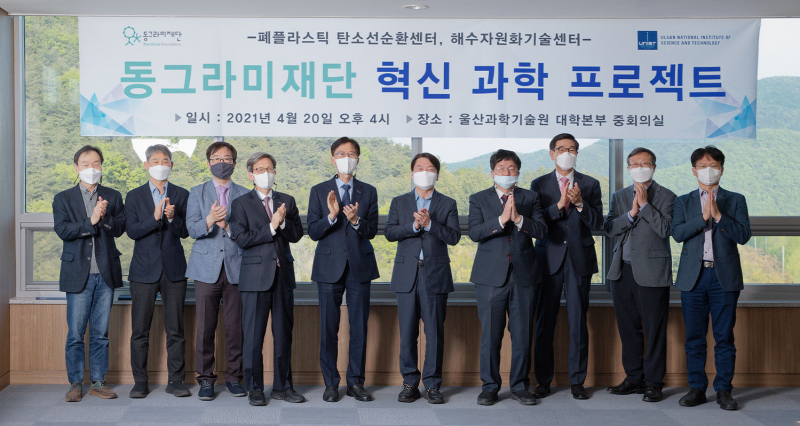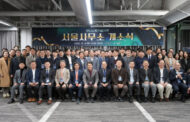The Circle Foundation (formerly Ahn Cheol-soo Foundation) has visited two research sites of UNIST that were selected for the 2020 Circle Foundation Innovation Science Project on Tuesday, April 20, 2021. The two research centers are the UNIST Center for Waste Plastics Carbon Cycling (UWCC) and the Seawater Resources Technology Research Center of UNIST.
This visit was carried out to check the current R&D status of the newly-selected research centers for the 2020 Circle Foundation Innovation Science Project and to address social challenges that can not be solved by the existing approach with the help of key researchers and school officials from those organizations. It has been attended by Founder Cheol Soo Ahn and Chairman Chi Kwon Jung of the Circle Foundation, as well as President Chang Soon Heung of Handong Global University who was the chairperson of this year’s Circle Foundation’s Innovative Science Project.
In December 2020, the Circle Foundation had the call for proposals for the Circle Foundation Innovation Science Projects and Programs, targeting domestic universities, research institutes, and organizations. Thus, they selected a total of six (6) institutions and provide them with 1.2 billion won in funding.
UNIST has announced that two of its research centers have been selected for the 2020 Circle Foundation Innovation Science Project in January 2021. The UNIST Center for Waste Plastics Carbon Cycling (UWCC), led by Professor Donghyuk Kim (School of Energy and Chemical Engineering) is developing next-generation biodegradable plastics via recycling. In addition to this, the center is currently carrying out research work on the decomposition process for suppressing the miniaturization of waste plastics and producing biodegradable plastics. The Seawater Resources Technology Research Center of UNIST, led by Professor Youngsik Kim (School of Energy and Chemical Engineering) pursues research on rechargeable seawater batteries, including the study of the many additional functions of seawater batteries. As part of this project, the center aims to develop an all-in-one device, in which seawater desalination, sterilization, hydrogen production, and carbon dioxide capture are possible during the charging and discharging process.













